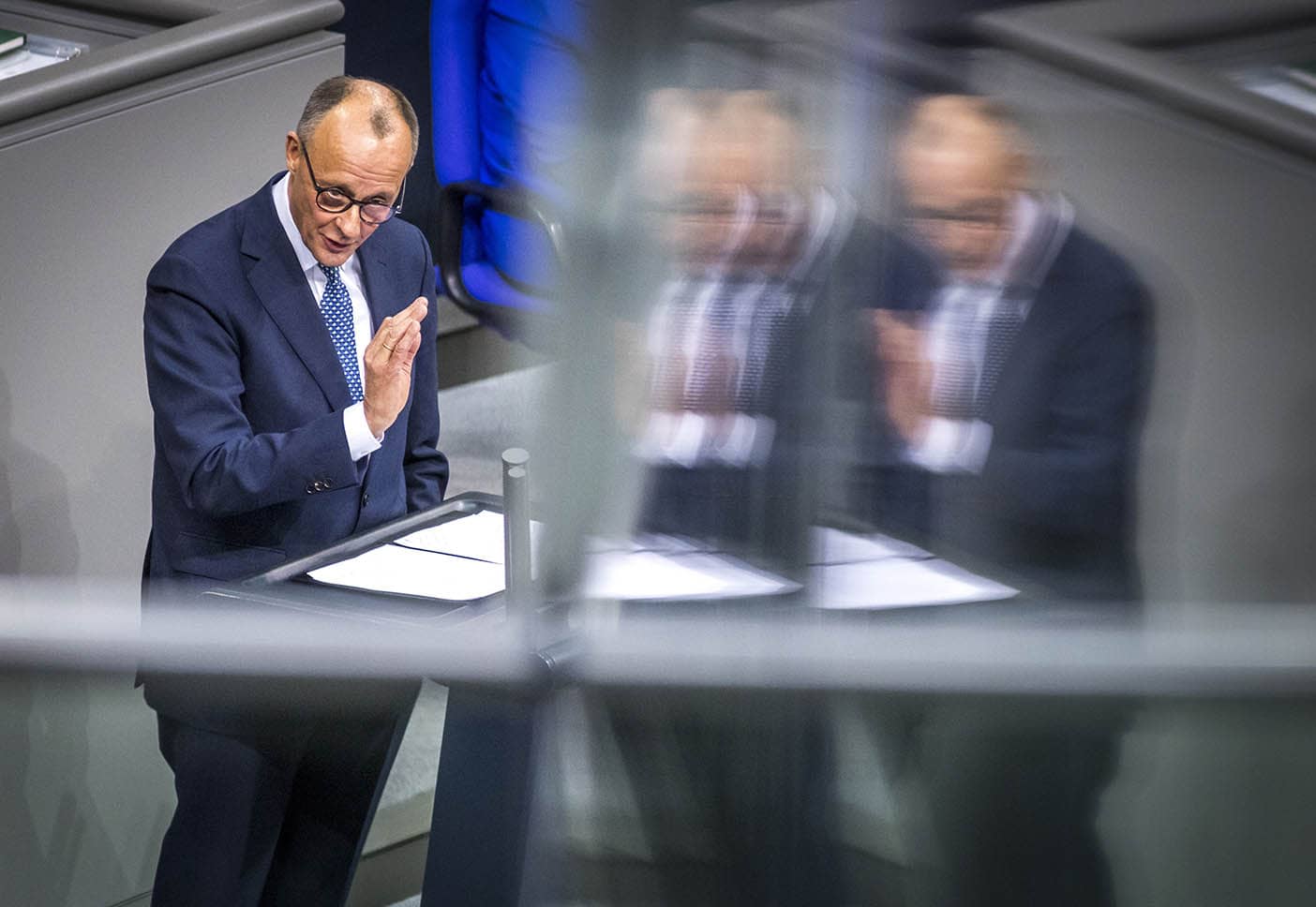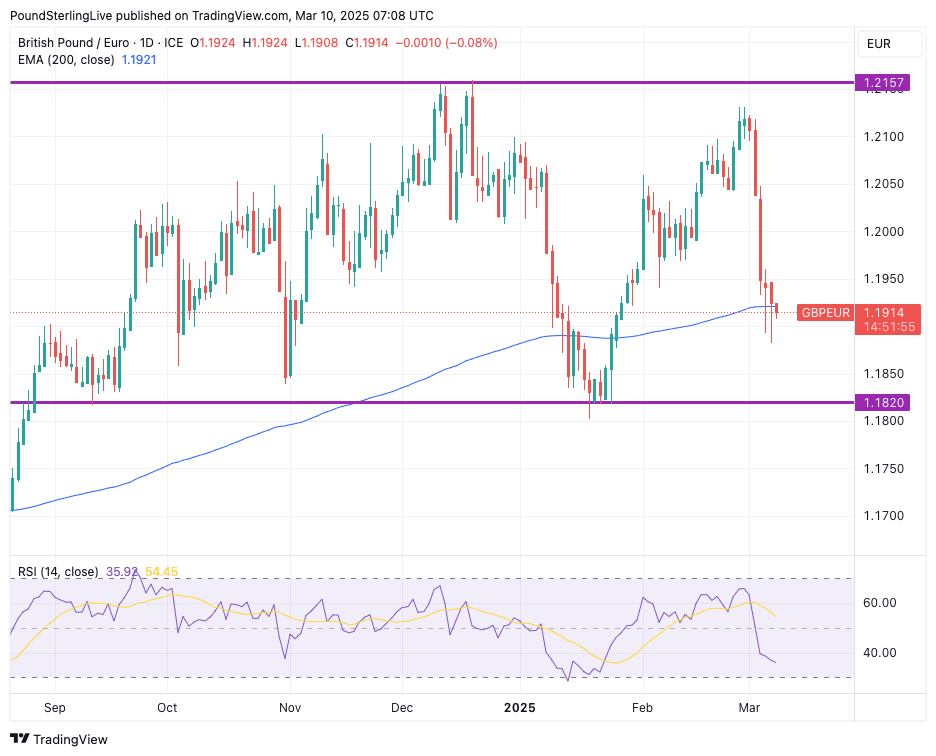
Image © Adobe Stock
Pound Sterling can record new lows against the Euro in the coming week.
The Pound-to-Euro exchange rate (GBP/EUR) fell 1.60% last week following the surprise decision in Germany to boost government spending and has slipped below the 200-day exponential moving average (EMA) on Monday at 1.1921.
This is a major technical level, and the key question is whether it acts as support, which technical lore says it should. If it does, the selloff could fade in the coming days as the exchange rate finds buying interest.
However, a breakdown through here opens the gate to further losses to 1.1820.
Above: GBPEUR at daily intervals.
Consolidation would be in line with the view that Euro strength has limits ahead of the announcement of U.S. trade tariffs on the EU, which U.S. President Donald Trump has committed to deliver.
"Once U.S. tariffs on the EU are announced and implemented, we look for a setback to lower levels," says Dominic Schnider, a strategist at UBS Chief Investment Office, regarding the Euro's outlook.
Despite the locality of the 200-day EMA, which can prompt some support to emerge, the Relative Strength Index (RSI) is at 36 and is pointing lower, confirming near-term momentum is still to the downside.
Should the aforementioned support fail this week, then losses will extend to the January lows at 1.1820, which is the approximate low-water mark for selloffs in November and September 2024.
Analysts at one investment bank warn the Pound's selloff now leaves it looking oversold (EUR overbought).
"The latest EUR/GBP rebound in particular has pushed the FX pair into overvaluation territory according to our short-term fair value model. This suggests that the GBP underperformance vs the EUR has outpaced the recent widening of the EUR-GBP rate spread," says Crédit Agricole.
"While GBP/USD should continue to follow the broad USD moves, the overvalued EUR/GBP could come under renewed selling pressure, especially if there are no huge disappointments from the incoming UK data," adds the note.
So, taking the together above, the near-term outlook is soggy and further weakness is possible, however, the selloff should slow dramatically and the conditions for consolidation and shallow rebounds are in place.

File image of Friedrich Merz, Reichstag building, plenary hall, Berlin / Germany. Photographer: Thomas Köhler / photothek, for bundestag.de.
The Euro leg of the Pound-Euro equation is firmly in charge, as the single European currency surged following a dramatic rise in German government bond yields last week.
The yields blew out by approximately 40bp after Germany's political leaders agreed to a €500BN infrastructure spending plan as well as significantly more money for defence.
The German spending decision is inflationary, meaning the market sees far less scope for European Central Bank interest rate cuts, which supports bond yields and the Euro.
The EUR's focus will be on Germany this week, where the spending plans are expected to be passed.
Over the weekend, the CDU/CSU, which won the recently held elections, and the SPD detailed plans for boosting growth.
"If implemented, the envisaged reforms coupled with more public spending will likely strengthen the German economy noticeably," says Holger Schmieding, economist at Berenberg Bank.
Berenberg thinks the plans will boost German economic growth from 1.2% for 2026 and 1.0% for 2027 to 1.4% for both years. German inflation is forecast to rise to 2.4% in 2026 and 2.5% in 2027 after 2.3% this year.
Turning to the UK, Friday's UK Monthly GDP report will be the data highlight of the coming week.
"As the first month of the quarter and year, January’s GDP outturn will play a big part in setting the tone for growth expectations for both Q1 and the whole of 2025. We expect January GDP to rise by 0.1% m/m," says Hann-Ju Ho, Senior Economist at Lloyds Bank.
If GDP beats expectations, the pound will rise into the weekend, as this would confirm that fears of a material slowdown are exaggerated, taking pressure off the Bank of England to cut interest rates.

